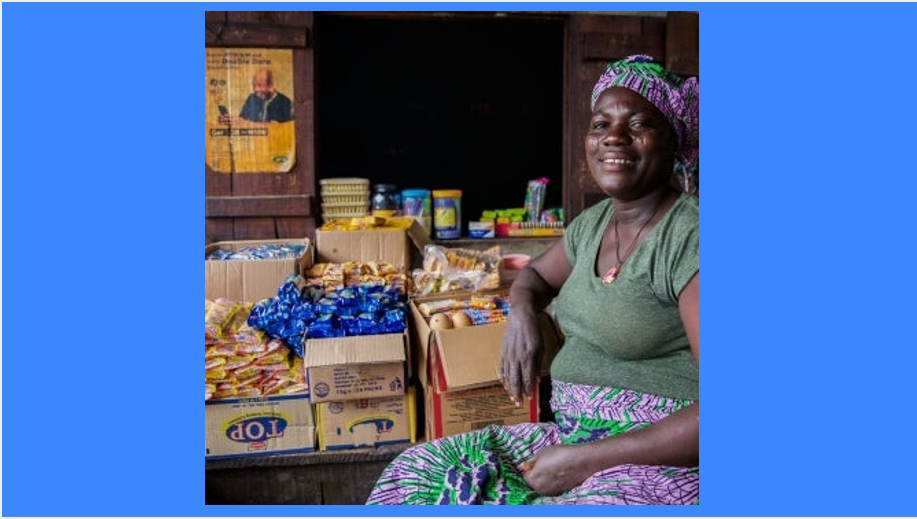This is the second blog in CGAP’s Digital Merchant Payments series. Read the first blog for context on the urgent need to accelerate digital merchant payments.
Despite mobile money’s remarkable success in Sub-Saharan Africa—with approximately 856 million registered mobile money accounts processing over 912 billion USD annually —digital merchant payments (DMP) remain stubbornly limited. Cash dominates transactions among the region’s estimated 44 million micro, small, and medium enterprises (MSMEs), which are largely informal and provide 80% of jobs across the continent.
The fact that person-to-person (P2P) digital payments are thriving, while most merchants still prefer cash raises an important question: what’s holding merchants back from adopting digital merchant payments? The answer lies in a fundamental mismatch between how current payment systems work and the needs of most African MSMEs.
The economics don’t add up
The dominant digital merchant payment model charges merchants a fee of 0.5–3% per transaction—known as the merchant discount rate (MDR) in the card world —while keeping transactions free for customers. This model works well for large retailers with healthy profit margins, but it fails for micro-merchants, who often operate on razor-thin margins within or below the MDR. For them, accepting digital payments can turn into a loss-making proposition.
This is not a niche issue. Over 95% of Sub-Saharan Africa’s MSMEs are micro-enterprises, and more than 80% operate informally, with profit margins often in the single digits. For a merchant selling 10 USD worth of goods with even a ~10% margin, a typical 3% merchant fee eliminates a third of the profit of the small business. When transaction costs consume a significant portion of already slim margins, digital payment acceptance becomes financially unviable. This isn’t resistance to innovation; it’s basic arithmetic. Therefore, merchants rationally steer customers who want to pay digitally towards peer-to-peer payments, where the sender or customer, in this case, bears the cost and not the receiver (merchant). In some markets, like in Tanzania, mobile operators reluctantly charge the customer in an effort to make the business case work for small merchants, recognizing that such a fee stifles growth.
The cost burden extends well beyond the initial MDR. Most micro merchants report that their suppliers insist on cash or a P2P payment, which means the merchants end up bearing a cost either to cash out or to send the P2P payment. While providers in some markets have reduced or zero-rated the merchant discount rate (MDR)—the fee paid by the merchant on each digital payment—the cash out and P2P fees can be significantly higher than the 0.5–3% MDR (e.g., Tanzania), compounding these economic pressures.
The cash advantage: free, immediate, and still preferred
From a merchant’s perspective, cash offers two advantages that digital merchant payments struggle to match: zero direct costs and immediate availability. While cash has hidden costs—travel time to deposit cash at the bank, theft risk, unauthorized transactions by staff, and storage concerns—these often remain invisible to merchants or are considered as normal operating costs.
The real operational cost extends beyond fees. While small and medium merchants often receive free point-of-sale (POS) devices that are subsidized by FSPs, micro merchants often need to invest in their own payment acceptance devices. Due to the prevalence of bank cards in Nigeria as well as high rates of fraud, merchants need to acquire costly POS devices that comply with secure transaction protocols and bear the ongoing associated costs, such as electricity, 3G connectivity, etc. While the advent of QR and renewed investment in USSD is reducing the traditional cost of acceptance, micro merchants still need to invest in connectivity, printing, tabletops, and (in some markets) their own signage. Cash requires none of this infrastructure. For informal merchants, these are just points of additional friction and not a compelling value proposition.
Furthermore, when digital payment problems occur—failed transactions, disputed charges, or system downtime—recourse is often slow and complex. Transaction reversals and dispute resolution can take days, during which merchant cash flow is impacted. In Nigeria, for example, if a dispute about a pending transaction is not resolved within 72 hours, the merchant loses if the customer has already received the goods or services. Cash transactions, by contrast, are immediate and final with no complex resolution processes required.
The transparency problem deterring adoption
Beyond transaction fees, merchants face a subtler but powerful barrier: the fear that the transparent records created by digital payments could make them vulnerable to burdensome and inaccurate tax scrutiny, which could threaten their business viability. Across Sub-Saharan Africa, tax authorities are increasingly monitoring digital transactions, with revenue authorities in Kenya and Uganda already analyzing P2P and merchant payment data to identify taxable income.
While concerns about taxation are legitimate, particularly for informal merchants operating outside formal regimes, several countries have positively used tax policy to accelerate digital payment adoption among micro-merchants. Mexico, Colombia, and India offered lighter tax regimes or credits tied to digital sales, while Argentina removed VAT and income-tax withholdings on e-payments. Together, these measures reduced costs and simplified compliance, making it more attractive for small shops to go digital.
Systems built for the wrong market
Traditional merchant payment models emerged from a specific ecosystem: established banking networks serving large-volume retailers with substantial margins and negotiating power. The 2-3% merchant discount rate (MDR) worked because big retailers could absorb costs, negotiate volume discounts, and benefit from increased sales when customers paid with cards rather than cash. Credit card systems have traditionally thrived in environments where convenience drives incremental purchases, which is not necessarily the reality of small-margin African corner shops. Additionally, mobile money providers designed single-till systems for individual micro and small businesses. These systems assume that the owner is always at the till. Reality is different, however. Multiple people handle the till in many small businesses, where relatives and employees might manage sales, but only owners can access merchant payment confirmations – creating important operational frictions with merchant payment systems. Developing employee-accessible payment systems with appropriate safeguards represents a critical but overlooked adoption barrier.
Merchant know-your-customer (KYC) requirements present another important challenge, probably also a legacy of card-based schemes, which demand business registration documents, tax identification numbers, and proof of address that most informal merchants simply don’t possess. While some providers like MTN in Uganda and South Africa and M-Pesa’s Pochi La Biashara in Kenya have introduced simplified “informal trader wallets” with tiered KYC, most digital merchant payment onboarding still assumes formal business documentation.
Making digital merchant payments work for the African corner store
Accelerating the adoption of digital merchant payments in Sub-Saharan Africa demands designing payment systems built with the realities of merchants in mind. It requires restructuring the fundamental cost equation. For example, implementing tiered pricing models that offer free transactions to both customers and small merchants up to defined volume thresholds, with appropriate checks and balances, including transaction limits, merchant verification, and fraud monitoring to prevent abuse while preserving accessibility.
Equally critical is providing a value proposition to merchants that is beyond the convenience of payments. For example, Safaricom and MTN have built merchant ecosystems around enterprise capabilities: automated payroll, supplier payments, and cash flow management tools that cash cannot provide. This transforms the value proposition from costly payment acceptance to business enablement. Payment fees become justified by operational efficiencies, working capital access, and management capabilities that digital integration enables. However, most providers still offer digital merchant payments as an isolated payment processing service without the surrounding business value, making fees economically irrational for merchants.
Sub-Saharan Africa’s merchant landscape represents one of the world’s largest untapped digital payment markets. Realizing this immense potential requires building payment systems for African merchants as they operate – informal, small margin, family-run businesses serving essential community needs. Until payment providers make this fundamental shift, merchants’ preference for cash will remain rational business logic, not resistance to technological progress.
The next blog in this series will explore how payment providers can build sustainable business models while serving micro merchants profitably.



